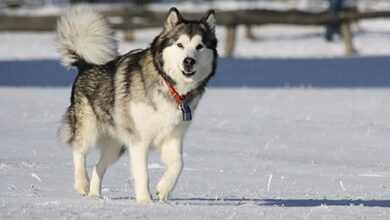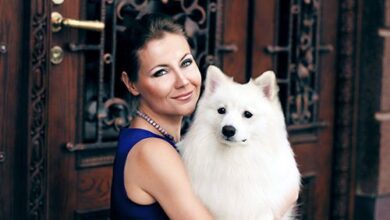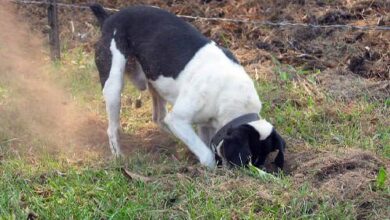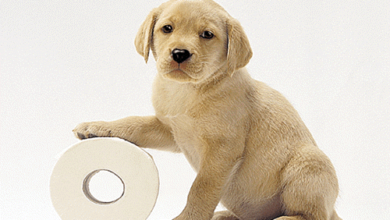Rehabilitating your dog, How to do it in 4 steps?
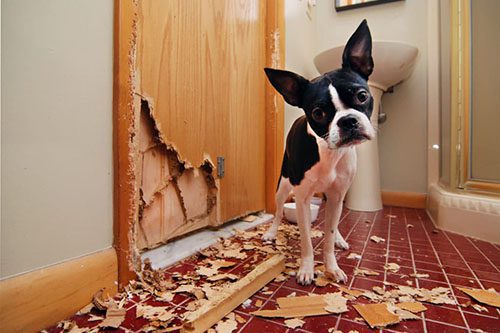

First of all, it’s always easier to prevent a bad “habit” than to quit it when it becomes bothersome to you. For example, if you accept that your dog sleeps on your bed and that you no longer want it following the birth of a child, your dog will not understand why you let him sleep with you for several years and that you suddenly don’t want it anymore. A change in these lifestyle habits can be a source of anxiety and it will be necessary to proceed gradually so as not to disturb it too much.
Rehabilitating dogs: What steps to follow?
Here are the steps that we advise you to apply to carry out the rehabilitation of your little companion.
Step 1: get back on a good footing by setting up rules and limits
Above all, you need to impose limits and rules of life that will provide a healthier environment for your dog. To feel safe, your pooch needs to not be able to do as he pleases. An overflow of freedom is indeed emotionally difficult to manage for an animal which can then be fearful, too reactive or lost. In search of landmarks, he manifests his unease through bad behavior.
To restore a healthy and balanced framework, here are the parameters on which you can act.
A dedicated and secure space: your doggie needs a place of his own within your home, a space that everyone must respect so that he feels calm, serene and can take refuge there. without fear of being disturbed. Set him up in a corner of the living room, so that he does not feel isolated from family life, but in a quiet and comfortable place. Your animal must be able to go there whenever he wants, but also on your simple order. Respect must be total, which means that you must not disturb your animal when it is in its space, in its basket. Don’t pet it as you pass by. If you need him to come to you, call him and invite him to join you.
Limited areas: set your limits on the spaces your dog is allowed to frequent. For example, if you forbid him to get on your couch or your bed, this prohibition must be systematic and he must get off absolutely if you catch him disobeying you. Conversely, if you allow him to climb it, your dog must still learn to get down at the slightest command from you. Ideally, it’s best to teach him to ride it only when you ask him to.
Better managed contacts: it is important that you initiate contact with your dog. Caress, play session, walk… it’s up to you to decide when it starts and when it ends. It is not a question of depriving your little companion of tenderness, but of making him understand that he cannot have everything he wants when he wants it. He will thus learn to manage his frustration, to calm down and to integrate the fact that giving up is winning. More concretely, ignore your pooch when he asks for your attention (don’t look at him, don’t talk to him or touch him). When he has moved on, call him and offer him what he wanted (caress, treat, etc.). He will understand that you decide and that giving up allows him to obtain satisfaction all the same.
Better Managed Resources: You need to manage your dog’s diet for their health and well-being. Your doggie cannot eat as he pleases or risk developing serious disorders, as well as behavioral problems. Again, it’s up to you to decide when your dog can eat. Give him one or two meals a day of a daily ration adapted to his needs and let him eat in 15 minutes at most. This allows him to learn to manage his hunger, his appetite and his frustration. Your dog must also learn to wait before eating his ration.
These basic rules will allow your animal to feel more reassured by a stable framework that respects its true needs and yours.
Step 2: meet the doggie’s needs
It is imperative to meet the basic needs of the dog and to stimulate it every day to ensure its balance.
His social needs: the dog being a sociable animal, he needs regular contact with his congeners.
His physical needs: all dogs must walk at least 30 minutes a day. Depending on the needs of his race and his age, the outings should be more or less sporty, long, intense and stimulating.
His mental needs: your dog needs to be intellectually stimulated every day in order to tire himself usefully and to develop and strengthen your relationship.
His olfactory needs: the sense of smell being very developed in dogs, be sure to stimulate it daily by outings and play sessions that call on this ability.
Step 3: Strengthen your obedience
When the first two stages are well implemented, teach your dog essential basic commands, such as “sit!”, “down!”, “stay still!”, “stop!” and recall.
Step 4: Be consistent
As we have said, consistency is essential to successfully rehabilitate your dog. You actually need:
- Always apply the same instructions, in the same way;
- Encouraging your dog to success;
- Systematically taking the initiative;
- Rewarding each success;
- Play with your dog daily and stimulate him effectively;
- Vary the activities;
- progress gradually in each learning process and be patient;
- Show yourself calm, confident, encouraging, positive, firm and benevolent;
- Do not hesitate to question your methods.
Finally, note that it is sometimes useful to call on a professional. Seeking the services of a dog trainer is not a sign of failure, but on the contrary testifies to your desire to accompany your animal towards better habits by working with this specialist in his daily rehabilitation.


